TRANS-DECAHYDRONAPHTHALENE
Synonym(s):trans-Decalin;trans-Decahydronaphthalene;trans-Decalin
- CAS NO.:493-02-7
- Empirical Formula: C10H18
- Molecular Weight: 138.25
- MDL number: MFCD00064191
- EINECS: 207-771-4
- SAFETY DATA SHEET (SDS)
- Update Date: 2024-07-11 19:21:31
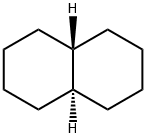
What is TRANS-DECAHYDRONAPHTHALENE?
Chemical properties
liquid
The Uses of TRANS-DECAHYDRONAPHTHALENE
trans-Decahydronaphthalene has been used to measure absolute photoionization and dissociative photoionization cross-section for photon energies.
Definition
ChEBI: The trans-stereoisomer of decalin.
Purification Methods
See purification of cis-isomer above. [Seyer & Walker J Am Chem Soc 60 2125 1938, Baker & Schuetz J Am Chem Soc 69 1250 1949, Beilstein 5 IV 311.]
Properties of TRANS-DECAHYDRONAPHTHALENE
| Melting point: | −32 °C(lit.) |
| Boiling point: | 185 °C756 mm Hg(lit.) |
| Density | 0.87 g/mL at 25 °C(lit.) |
| vapor density | 4.76 (vs air) |
| vapor pressure | 42 mm Hg ( 92 °C) |
| refractive index | n |
| Flash point: | 127 °F |
| storage temp. | Store below +30°C. |
| Water Solubility | Insoluble in water |
| form | clear liquid |
| color | Colorless to Almost colorless |
| explosive limit | 0.7-4.9%, 100°F |
| Merck | 14,2846 |
| BRN | 2036251 |
| Dielectric constant | 2.1(20℃) |
| Stability: | Stable. Combustible. Incompatible with oxidizing agents. May form explosive peroxides in storage. |
| CAS DataBase Reference | 493-02-7(CAS DataBase Reference) |
| EPA Substance Registry System | trans-Decahydronaphthalene (493-02-7) |
Safety information for TRANS-DECAHYDRONAPHTHALENE
| Signal word | Danger |
| Pictogram(s) |
 Flame Flammables GHS02  Corrosion Corrosives GHS05  Skull and Crossbones Acute Toxicity GHS06  Health Hazard GHS08  Environment GHS09 |
| GHS Hazard Statements |
H226:Flammable liquids H304:Aspiration hazard H314:Skin corrosion/irritation H331:Acute toxicity,inhalation H411:Hazardous to the aquatic environment, long-term hazard |
| Precautionary Statement Codes |
P210:Keep away from heat/sparks/open flames/hot surfaces. — No smoking. P280:Wear protective gloves/protective clothing/eye protection/face protection. P301+P330+P331:IF SWALLOWED: Rinse mouth. Do NOT induce vomiting. P303+P361+P353:IF ON SKIN (or hair): Remove/Take off Immediately all contaminated clothing. Rinse SKIN with water/shower. P305+P351+P338:IF IN EYES: Rinse cautiously with water for several minutes. Remove contact lenses, if present and easy to do. Continuerinsing. |
Computed Descriptors for TRANS-DECAHYDRONAPHTHALENE
New Products
4-Aminotetrahydropyran-4-carbonitrile Hydrochloride (R)-3-Aminobutanenitrile Hydrochloride 4-AMINO-TETRAHYDRO-PYRAN-4-CARBOXYLIC ACID HCL 4-(Dimethylamino)tetrahydro-2H-pyran-4-carbonitrile 3-((Dimethylamino)methyl)-5-methylhexan-2-one oxalate 1,4-Dioxa-8-azaspiro[4.5]decane 5-Bromo-2-nitropyridine Nimesulide BP Aceclofenac IP/BP/EP Mefenamic Acid IP/BP/EP/USP Diclofenac Sodium IP/BP/EP/USP Ornidazole IP Diclofenac Potassium SODIUM AAS SOLUTION ZINC AAS SOLUTION BUFFER SOLUTION PH 10.0(BORATE) GOOCH CRUCIBLE SINTERED AQUANIL 5 BERYLLIUM AAS SOLUTION 2-Bromo-1-(bromomethyl)-3-chloro-5-nitrobenzene 2-Bromo-3-nitroaniline N-(3-Hydroxypropyl)-N-methylacetamide 3-Bromo-6-chloropyridazine 4-ethyl-3-nitrobenzoic acidRelated products of tetrahydrofuran
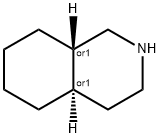
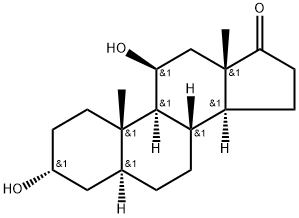
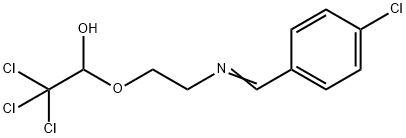
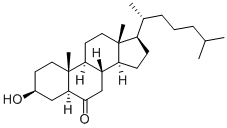



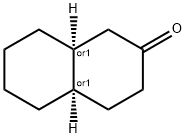
You may like
-
 trans-Decahydronaphthalene CAS 493-02-7View Details
trans-Decahydronaphthalene CAS 493-02-7View Details
493-02-7 -
 Trans-decahydronaphthalene 95% CAS 493-02-7View Details
Trans-decahydronaphthalene 95% CAS 493-02-7View Details
493-02-7 -
 trans-Decahydronaphthalene CAS 493-02-7View Details
trans-Decahydronaphthalene CAS 493-02-7View Details
493-02-7 -
 1823368-42-8 98%View Details
1823368-42-8 98%View Details
1823368-42-8 -
 2-(3-(tert-butyl)phenoxy)-2-methylpropanoic acid 1307449-08-6 98%View Details
2-(3-(tert-butyl)phenoxy)-2-methylpropanoic acid 1307449-08-6 98%View Details
1307449-08-6 -
 Ethyl 3-(furan-2-yl)-3-hydroxypropanoate 25408-95-1 98%View Details
Ethyl 3-(furan-2-yl)-3-hydroxypropanoate 25408-95-1 98%View Details
25408-95-1 -
 2-Chloro-5-fluoro-1-methoxy-3-methylbenzene 98%View Details
2-Chloro-5-fluoro-1-methoxy-3-methylbenzene 98%View Details
1805639-70-6 -
 Lithium ClavulanateView Details
Lithium ClavulanateView Details
61177-44-4
Statement: All products displayed on this website are only used for non medical purposes such as industrial applications or scientific research, and cannot be used for clinical diagnosis or treatment of humans or animals. They are not medicinal or edible.